Using: [python] [numpy] [matplotlib]
So I have a 3D array to create a scatter plot making a n * n * n cube. Those points have different values of potential represented by colors.

size = 11
z = y = x = size
potential = np.zeros((z, y, x))
Positive = 10
Negative = -10
""" ------- Positive Polo --------- """
polox = poloy = poloz = [1,2]
polos=[polox,poloy,poloz]
polop = [list(x) for x in np.stack(np.meshgrid(*polos)).T.reshape(-1,len(polos))] # Positive polos list
for coord in polop:
potential[coord] = Positive
""" ------- Negative Polo --------- """
polo2x = polo2y = polo2z = [size-3,size-2]
polos2=[polo2x,polo2y,polo2z]
polon = [list(x) for x in np.stack(np.meshgrid(*polos2)).T.reshape(-1,len(polos2))] # Negative polos list
for coord in polon:
potential[coord] = Negative
I have 2 polos of values -10 and 10 at the start and the rest of the points are calculated like this: (the mean of the surrounding points, no diagonals):
for z in range(1,size):
for y in range(1,size):
for x in range(1,size):
if [z,y,x] in polop:
potential[z,y,x] = Positive # If positive polo, keeps potential
elif [z,y,x] in polon:
potential[z,y,x] = Negative # If negative polo, keeps potential
elif z!=size-1 and y!=size-1 and x!=size-1: # Sets the potential to the mean potential of neighbors
potential[z][y][x] = (potential[z][y][x+1] + potential[z][y][x-1] + potential[z][y+1][x] + potential[z][y-1][x] + potential[z+1][y][x] + potential[z-1][y][x]) / 6
And for the outer cells:
for z in range(0,size):
for y in range(0,size):
for x in range(0,size):
potential[z,y,0] = potential[z,y,2]
potential[z,0,x] = potential[z,2,x]
potential[0,y,x] = potential[2,y,x]
if z == size-1:
potential[size-1,y,x] = potential[size-3,y,x]
elif y == size-1:
potential[z,size-1,x] = potential[z,size-3,x]
elif x == size-1:
potential[z,y,size-1] = potential[z,y,size-3]
What I need is to show a surface connecting the points that have the same value interval 'same colors' (like from 0 to 2.5).
I know that there are a lot of questions like this, but I can't adapt to my code, it either doesn't show (such as this) or it's not the same problem or it's not with python (as this one), that's why I'm asking again. It can also be shown as a lot of subplots each with a surface.
Note: My 3D array is such that if I type print(potential[1,1,1]) it shows the value of that cell that, as you can see in the image below, is 10. And that's what I use to show the colors.
fig = plt.figure()
ax = fig.add_subplot(111, projection='3d')
z,y,x = potential.nonzero()
cube = ax.scatter(x, y, z, zdir='z', c=potential[z,y,x], cmap=plt.cm.rainbow) # Plot the cube
cbar = fig.colorbar(cube, shrink=0.6, aspect=5) # Add a color bar which maps values to colors.

